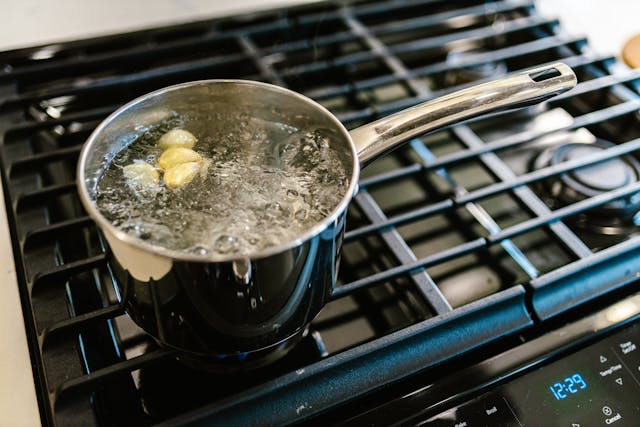When the winter chill sets in, many of us shift our focus to staying warm—such as taking longer hot showers or heating water more frequently. But did you know winter is also a critical time to save water? In India, water scarcity is real and every drop counts. By adopting thoughtful habits and small adjustments, you can reduce water waste, lower your bills, and contribute to sustainability.
This blog explores key winter-specific water-saving strategies for Indian households—covering indoors, outdoors, heating systems, and landscaping—with actionable tips you can start right away.
Why Winter Water Conservation Matters in India
-
Studies show that in winter, per-person daily water use in Indian households still runs over 90 litres for many. Jetir+1
-
Many regions face reduced rainfall and supply issues in the cold season; for example, some systems in cold-climate rural India are designed with insulation and leak-prevention to maintain supply.
-
Less evaporation in cooler months offers an excellent opportunity to use water more efficiently and reuse it smartly.
Top Winter Water-Saving Tips for Indian Homes
1. Fix Leaks & Drips Early
Even a slow dripping tap or running flush wastes considerable water. According to Indian household water-saving guides: turning off faucets when not in use and repairing leaks can significantly cut indoor consumption.
Action: Inspect all taps, showerheads, flush tanks and outdoor spigots monthly. Replace worn washers, tighten joints, and ensure proper sealing.
2. Use Water Smartly for Hot Water Needs
Winter brings increased use of hot water (for showers, washing, cleaning). A global tip: households use a larger portion of their water for hot-water tasks in winter.
Tips for Indian homes:
-
Take shorter showers or use bucket + mug instead of continuous running shower.
-
Insulate hot-water pipes and tank (geyser) so you don’t waste water waiting for it to heat.
-
If you have a storage geyser, keep thermostat at moderate levels (e.g., ~55-60 °C) to avoid unnecessary heating & overheating.
-
Re-use the “cold” water that flows before the hot arrives: collect it in a bucket and use it for cleaning plants or washing utensils.
3. Indoor Habits That Save Water
-
While brushing teeth or shaving, turn off the tap instead of letting it run. Simple yet effective.
-
Wash full loads in washing machines or dishwashers (if you have them) rather than small partial loads.
-
For sinks and vegetable washing: use a pan or basin instead of running tap water. Then reuse that water for plants or flushing.
-
In toilets: if you have an older flush tank, consider a displacement method (e.g., a water bottle inside the tank) to reduce flush volume.
4. Outdoor & Garden / Terrace Care in Winter
Even though plants and lawns are less active in winter, you still need to maintain them—smart watering helps. From general guidance:
Actionable tips:
-
Mulch your garden beds to retain moisture and reduce the need for frequent watering.
-
Water plants during warmer hours (mid-morning) when there’s less risk of freezing or heavy evaporation. (Though Indian winters are milder in many places, the principle holds.)
-
Use grey-water (e.g., rinse water) for plants instead of fresh potable water.
-
Avoid watering driveways or non-plant areas—only water where needed.
5. Rainwater Harvesting & Water Storage
While rain is less in winter (depending on region), you can still implement systems that store water when available:
-
Roof-top rainwater harvesting systems help recharge groundwater or store water for non-potable uses. (Traditional Indian techniques highlight the value of storage.)
-
Use stored water for flushing, cleaning outdoor areas or plants rather than fresh mains water.
6. Prepare for Supply Interruptions & System Losses
Especially in colder or mountainous regions, freezing, pipe bursts or reduced flow can cause wastage. For example:
-
In high altitude regions of India, insulated piped networks were built to minimise winter supply loss.
What you can do: -
Insulate outdoor pipes, tanks if you live in colder zones.
-
Monitor meter readings: if there’s a jump in consumption without change in behaviour, there might be a hidden leak.
Winter-Specific Checklist for Indian Households
| Item | Action |
|---|---|
| Check all taps & flush systems | Fix drips within a week |
| Insulate hot water tank/pipes | Use affordable insulation blankets |
| Measure shower time | Reduce by 1–2 min per day |
| Collect cooling water | Start bucket/basin in shower to reuse |
| Use basin for vegetable washing | Then reuse that water for plants/cleaning |
| Mulch garden beds/terrace planters | Reduces watering needs |
| Harvest roof rainwater (even small amounts) | Store for non-potable use |
| Monitor water bill/meter | Investigate sharp increases |
Why Your Effort Matters
-
By saving even a modest amount of water per household, the cumulative effect across Indian cities and towns is significant.
-
Conserving water in winter also eases pressure on water-supply systems, helping ensure more reliable supply.
-
Water conservation often leads to energy savings too (especially hot-water systems)—so you save both water + energy.
Final Thoughts
For proactive households in India, winter is not just the season to keep warm—it’s also the season to waste less water. With some simple tweaks to your habits, plumbing, and garden routines, you can make a meaningful difference. Whether you live in a warm city or in a cooler hill-region, many of these tips apply. Start small, stay consistent, and you’ll soon see savings in your bill and comfort in your conscience.





2 Comments
John Doe
Posted on: March 13, 2025Leverage agile frameworks to provide a robust synopsis for high level overviews. Iterative approaches to corporate strategy foster collaborative thinking to further the overall value proposition.
John Doe
Posted on: March 13, 2025Leverage agile frameworks to provide a robust synopsis for high level overviews. Iterative approaches